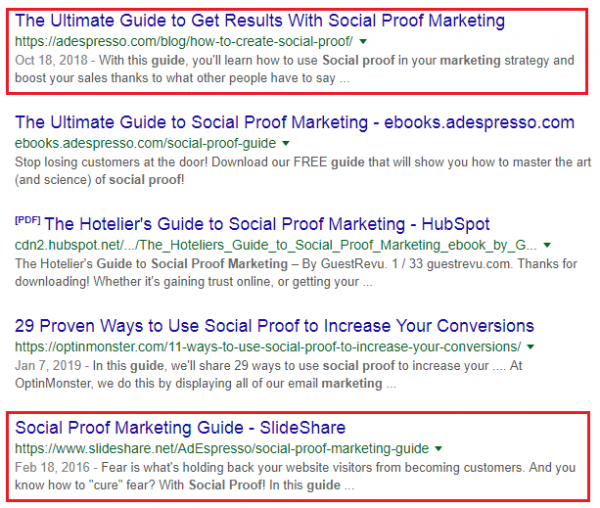Content creation and publishing is one of the most crucial aspects of your digital marketing strategy. High-quality content can help you achieve various goals such as increased website traffic, improved online presence, and better brand reputation.
However, creating good content on a regular basis is a herculean task. One way to simplify this process is by repurposing content that you’ve already published.
Repurposing content offers a number of lucrative benefits for marketers and content creators. However, before we explore the advantages, let’s first take a closer look at what repurposing content really means.
Table of Contents
Repurposing Content: Understanding the Concept
Repurposing content simply means taking existing content that you’ve created for a particular purpose and using it for another purpose. This implies transforming an existing piece of content into a new format. It’s a simple strategy that just requires some creativity.
You could convert an extensive blog post into a podcast series or pick out vital information from an ebook and design an infographic with it. That’s what repurposing content is all about. You’re reusing your own content and presenting it in a different way.
It’s like putting old wine in a fancy new bottle.
For instance, the team at Moz publishes short informational videos every Friday on their YouTube channel as part of the company’s “Whiteboard Friday” series.
Each video is also accompanied by a blog post that includes detailed video transcriptions. This gives their audience the option to choose between two different ways of consuming the same content.
What’s more, you don’t need to spend time researching or writing the content. You’ve got a blog post ready just with your video transcript. It’s a great strategy to repurpose content. It’s all about diversifying your medium.
Image via Moz
Repurposing content can also mean changing the target audience for that content.
Let’s say you have published a blog post on travel photography tips. You could edit the post and restructure it so that it’s applicable to other genres of photography such as landscape and wildlife.
In a nutshell, you work with what you have already created. You look at it from a different angle and add a new spin to it.
Now, let’s take a look at how repurposing content can benefit you.
Optimum Use of Time and Effort
The most obvious advantage of repurposing content is that it saves you the trouble of coming up with new content ideas.
A topic that has struck the right chord with your audience once is more likely to gain traction than a new one. So instead of brainstorming an endless list of content ideas, you can pick the most potent ones. And then concentrate on creating high-quality content to get the most out of it.
It can save you hours that you would have otherwise spent on brainstorming ideas, researching content, and then producing it.
Expand Your Reach
Your audience – be it your social media followers, blog readers, or email subscribers – keeps growing over time. Some of them may not be aware of an ebook you had published a year ago.
Repurposing content gives you an opportunity to convey the same information to your new audience members without becoming redundant to those who have read it before. For instance, you could transform the ebook into a detailed tutorial video and publish it on YouTube.
Additionally, while your target audience may have a lot of things in common, their learning styles and preferences will vary.
For instance, some people might be visual learners who prefer to consume information in the form of interesting videos and infographics. Others might find a whitepaper that is full of statistics and case studies more interesting.
Repurposing content allows you to cater to these varying tastes without creating different content for each of them.
When you publish an ebook and accompany it with a podcast series, the same content starts appealing to different members of your target audience. It also helps your content reach outside the confines of your target audience and gives your brand increased visibility.
For instance, Jay Baer, the founder of Convince and Convert, creates two- to three-minute informational videos on topics related to digital marketing.
His team then converts those videos into blog posts for their website, infographics for social media, podcast episodes, and blog posts for Medium. In this way, by repurposing content, they can reach out to a massive audience on different platforms.
Target Different Stages of the Buyer’s Journey
Repurposing content is also indirectly linked to the buyer’s journey.
Your target audience is comprised of people in three different stages of the buyer’s journey – awareness, consideration, and decision. The frame of mind and preferences of people vary at each stage of the buyer’s journey. You need to study the buyer, and their needs and preferences carefully to win them over.
Someone in the decision stage has already done their research and is on the verge of making a purchase. They may want to read a detailed article or ebook that will help them make an informed decision.
On the other hand, someone in the awareness stage is just getting acquainted with your brand. This person probably won’t invest the same amount of time into reading an extensive white paper. They’d rather quickly glance through an infographic that summarizes your product or services.
Repurposing content allows you to reach out to people at different stages of the buyer’s journey, without creating different content for each one of them.
Boost Your SEO Game
Search engines have a preference for websites that strive to deliver meaningful and valuable content to their users.
Repurposing content allows you to target the same keywords over and over again without the risk of duplication. It’s a clever strategy that won’t get you on the bad side of Google yet will help to boost your SEO strategy.
By consistently publishing high-quality content on the same topics, you earn a reputation as an industry expert. This, in turn, improves your search engine ranking and gives increased organic visibility to your content.
Let’s say you have published a blog post that helped you secure a top position in Google SERPs. You can then repurpose that content in the form of a SlideShare presentation.
This is the exact strategy that was adopted by AdEspresso to steal the limelight in Google search results for the keyword, “social proof marketing guide.” It helped the brand grab two top positions in the SERPs for the same keyword.
Image via Google
Also, when your content resonates with different members of your audience, they are likely to share it further.
In addition to boosting your visibility, repurposing your content gives you an opportunity to earn more authentic backlinks. This helps you build a strong inbound link profile and further improves your search engine rankings.
Boost Brand’s Reputation and Online Presence
All marketers are looking to establish their authority in their niches. The most common pathway to achieve this is to focus on SEO and social media marketing. That’s what most marketers work on. Repurposing content is like a dark horse. It’s not a very popular strategy yet, but it can boost your brand reputation.
As we saw earlier, repurposing your content can get you more visibility online. When your content gets increased visibility, it also showcases your brand to a new audience. This helps you build a powerful online presence in a short span of time.
Additionally, repurposing existing content establishes your expertise on certain subject matters. Your audience will start perceiving you as an authority figure in your industry. This, in turn, strengthens your brand’s reputation and credibility.
Salvage Unsuccessful Content
As a content creator, you often invest a lot of time and effort into a particular blog post or video. Yet, sometimes, it fails to resonate with your audience and attract them.
That’s where repurposing content can come in handy.
That doesn’t mean you should give up on the idea or the content completely. It may have failed to resonate with the audience due to various reasons including incorrect timing, inappropriate context, wrong platform, etc.
Repurposing content allows you to breathe new life into old content and present it to your audience in a new format.
For instance, an ebook that has failed to capture significant leads can be transformed into a weekly podcast series. This saves you the trouble of looking for new content to start your podcast. It also gives you an opportunity to utilize content from a format that failed to serve its original purpose.
Achieve Multiple Goals
If you have found one content idea that is performing well on one platform, it is likely to show equally good results on other platforms. By repurposing content, you’ll be able to get the most out of your content.
Let’s say you have published a blog post that helped you achieve a significant increase in organic website traffic. You can elaborate on the same content to create an ebook that helps you capture business leads. Or you can summarize the main points on a printed flyer, which can be handed out to people at a networking event.
Improve Your Skill Set
You could repurpose your content by adding updates to existing content and then changing its format. This strategy requires you to stay abreast of the trending topics, content formats and platforms. As a result, you become a more versatile marketer who can explore different channels of advertising.
In addition, you also have to dig deep and acquire detailed knowledge about the topics you want to talk about. This presents you with a plethora of learning opportunities that will help you hone your own skills.
Conclusion
Repurposing content is a critical part of your content marketing strategy. In addition to saving time and resources, it can also help you achieve better results in terms of reach, organic visibility, and search engine rankings.
It can even give you a chance to repurpose less successful content. Ultimately, it also contributes to your personal growth as a content creator and marketer.
You don’t have to wait for your content to be published before you convert it into other formats for new platforms. In order to achieve the best results, you should start exploring repurposing opportunities while you are still creating your content.
However, don’t feel obligated to repurpose every piece of content that you create. Rather, you should focus your efforts on the content that is most likely to resonate with your audience and that can help you achieve multiple goals.
How have you repurposed existing content to expand your reach? Share your content repurposing tips in the comments section below.




Related Articles
22 Useful Content Promotion Platforms and Tools
21 Awesome Ecommerce Content Marketing Examples for 2024
7 B2B Content Marketing Tactics You Need to Start Using Today
Short Form Vs. Long Form Content: Which is Better?
21 Best Content Writing Tools to Help You Become a Better Writer
11 Best Grammarly Alternatives That a Smart Writer Needs to Know